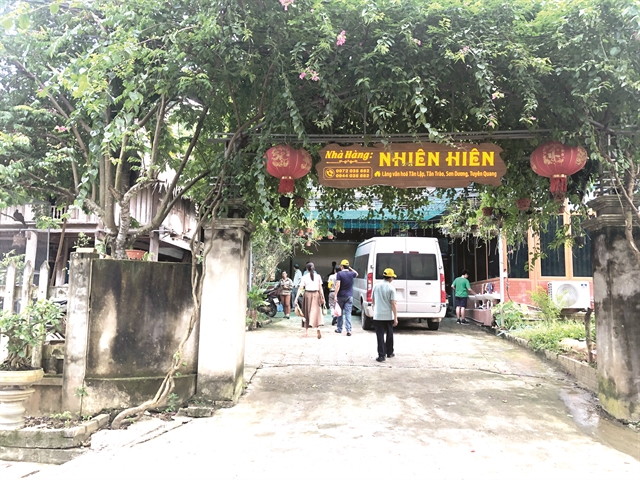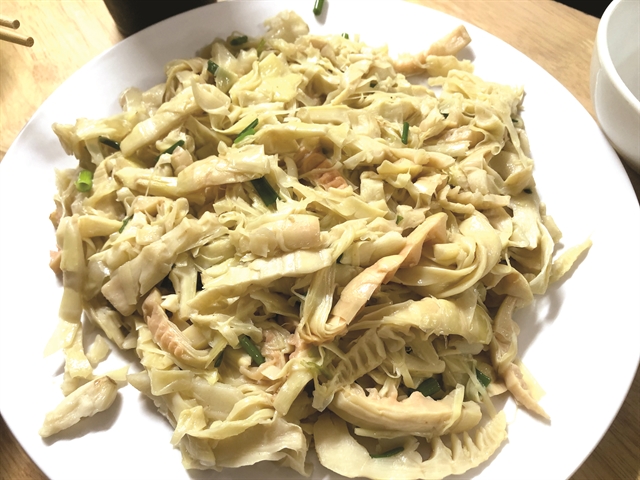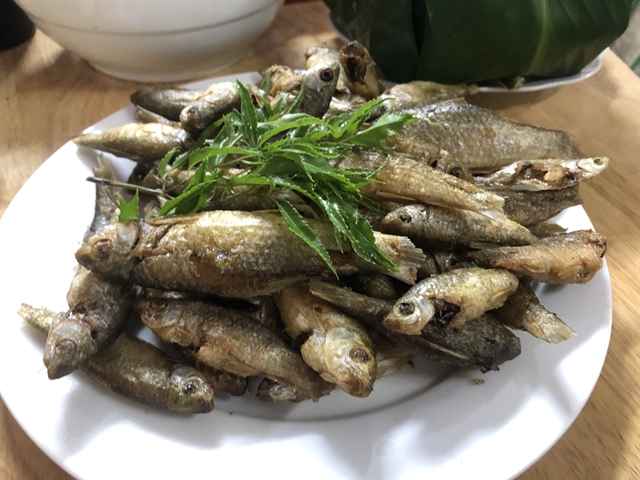 Life & Style
Life & Style

 |
| HISTORIC DINING: Nhiên Hiên Restaurant is located in the original home where staffers of the resistance government used to stay to conduct political and military activities. VNS Photo Mỹ Hà |
by Nguyễn Mỹ Hà
On a clear, bright autumn day, we left the bustling streets of Hà Nội to explore the historic Tuyên Quang Province, located about 150km north of the city.
The journey was smooth, thanks to well-maintained roads and light traffic —fortunate given that it's storm season, with recent weather forecasts warning of landslides and flash floods in the mountainous regions due to prolonged rain.
 |
| HEALTHY OPTION: In peace or during war, the tender bamboo shoots saved many hungry souls and today they are still a delicacy on any banquet tables, in the mountains or cities. |
Thankfully, our trip was uneventful, with no roadblocks or flooding. The weather was pleasant, with a bright blue sky and just a touch of heat, which the shade from large trees helped to temper.
Tuyên Quang, one of the six provinces of Việt Bắc (mountainous northern Việt Nam) region, holds a significant place in Việt Nam’s revolutionary history. In the early 1940s, it served as a key base for revolutionary forces, nurturing the activities that led to the August Uprising of 1945 and the country’s independence on September 2 the same year.
In late 1946 and early 1947, after failed efforts to negotiate peace with the French re-occupation forces, President Hồ Chí Minh and his government were forced to retreat to Tuyên Quang.
Hà Nội had once again become a battlefield, with the self-defence forces of the Hà Nội Citadel, using guerrilla warfare, heroically holding off the much better-equipped French army for more than 60 days. This allowed the evacuation of key offices, factories, hospitals, and civilians to Tuyên Quang, where the nine-year resistance would be coordinated from the ATK (Vietnamese acronym for Safety Zone) until the historic victory at Điện Biên Phủ in 1954.
 |
| FISHY SNACK: Local stream fish deep fried to be wrapped in sweet lolot leaves and dipped in soya sauce. |
President Hồ foresaw that if Việt Bắc nurtured the revolution to succeed, then Việt Bắc would cater to the war of resistance to final victory. History proved him right. Tuyên Quang became the "capital city of the war of resistance", hosting the Vietnamese Communist Party headquarters, the National Assembly, government offices, and more than 65 ministries and agencies across 146 locations within the province.
The people of Tuyên Quang played a crucial role, volunteering hundreds of thousands of workdays to relocate machinery, equipment, and documents. A Reception Committee was established to welcome evacuees from Hà Nội and the neighbourhoods, providing them with food, crop seeds, and assistance in settling into new villages. The contributions of Tuyên Quang and neighbouring provinces during the war of resistance were immense, particularly during the Autumn-Winter Campaign of 1953-1954, which saw more than 6.5 million workdays and the provision of vital supplies to the front lines.
However, the resistance war also faced internal challenges, such as the notorious 1950 case of Colonel Trần Dụ Châu, chief of Military Logistics, who was tried for embezzlement, corruption, and misuse of public funds. His lavish lifestyle and theft during a time of great hardship made headlines for days. The military court sentenced him to death, and the confiscation of his ill-gotten assets helped restore the flow of essential supplies to the front.
 |
| DEEP PURPLE: Sticky rice is a must in the mountains. It can keep you full for longer, and it can be had only with some sesame and peanut salt, and a delicious treat on its own. |
During our visit, we enjoyed what is known as a "resistance war meal", though it was far more elaborate than what the resistance fighters would have had. The meal was served at Nhiên Hiên Restaurant, located in a house that once hosted staffers of the resistance government. The nine-course feast featured mountainous delicacies such as young bamboo shoots, wild vegetable salad, and deep-fried spring fish, giving us a taste of what feasts during the war might have been like.
The table was filled with dishes like boiled poultry, roasted pork skewers, stir-fried pork with chayote buds, pumpkin soup, and roast sparrows — far exceeding the daily protein intake of an adult today. Purple sticky rice, a local delicacy, added vibrant colour to the meal and was served with salted roast sesame, a nutritious combination that has been cherished for generations. Bamboo shoot stir-fry, another local favourite, highlighted the abundant resources of the region.
While the meal may have seemed unbalanced, with an abundance of meat and poultry, it was a satisfying and heart-warming conclusion to our trip. Following the meal, we enjoyed rice wine and karaoke – a far cry from the austere conditions of the war, where alcohol was a luxury that could not be indulged. VNS
 |
| BANQUET:A full-option feast for eight people with nine courses and a fresh plate of plums for desert. |
------------------------
Nhiên Hiên Restaurant
Address: Cultural Village of Tân Lập, Tân Trào Commune, Sơn Dương District, Tuyên Quang Province
Tel: 0972-035882 & 0944-035882
Comment: Delicious food in a spacious setting. Karaoke is available in closed-door dining rooms.
How to get there: You can drive a motorbike or rent a car to travel along National Highway 2, passing through Phú Thọ and Yên Bái provinces to reach Tuyên Quang. The restaurant is located 40km from Tuyên Quang City.
Bus option: A coach ticket from Mỹ Đình Terminal to Tuyên Quang City costs between VNĐ 100,000 - 200,000. From there, take a motorbike taxi to the Tân Trào Banyan Tree.